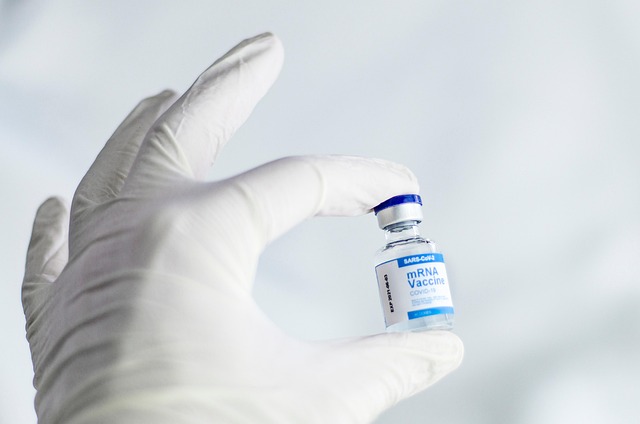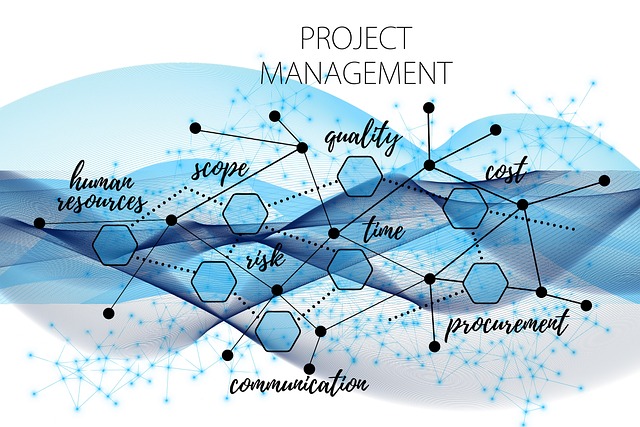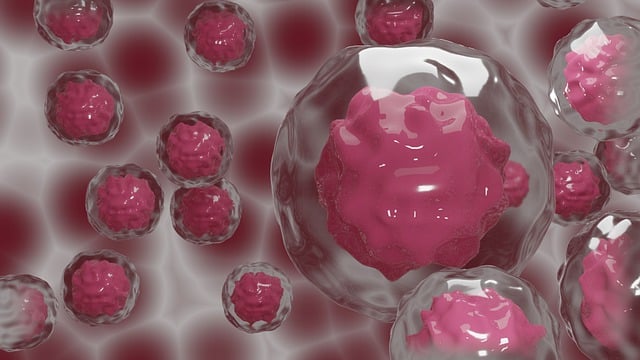Regenerative Treatments Revolutionize Spinal Cord, Nerve Pain Relief

Regenerative treatments for pain offer a promising approach to managing spinal cord and nerve injuri…….
In the ever-evolving healthcare landscape, a groundbreaking approach is transforming the way we address pain and promote healing—Regenerative Medicine and Pain Management (RMPM). This comprehensive field integrates cutting-edge technologies and therapeutic strategies to revolutionize patient care, offering renewed hope for those suffering from chronic pain and tissue damage. The following article delves into the intricate world of RMPM, exploring its principles, global impact, economic implications, technological breakthroughs, regulatory frameworks, challenges, and the bright future it holds.
Definition: Regenerative Medicine is a multidisciplinary field that focuses on developing strategies to restore and regenerate damaged tissues and organs. It leverages the body’s inherent healing mechanisms and encourages cell growth to repair or replace diseased or injured areas. Pain Management, an integral component of healthcare, involves the assessment and treatment of pain to improve patients’ quality of life. When combined, RMPM offers a holistic approach to managing pain by harnessing regenerative capabilities to accelerate healing and alleviate suffering.
Core Components:
Cell Therapy: This involves the transplantation of cells, such as mesenchymal stem cells (MSCs), to promote tissue regeneration. MSCs have the remarkable ability to differentiate into various cell types, making them valuable in treating conditions like muscle injuries, cardiovascular diseases, and neurological disorders.
Tissue Engineering: A process that combines cells, scaffolds, and bioactive factors to create functional tissues or organs in the lab. This technology has the potential to replace damaged or lost tissues, offering solutions for organ transplantation and reconstructive surgeries.
Growth Factors and Biologics: These are natural substances that stimulate cell growth, proliferation, and differentiation. Growth factors have been used to enhance healing after injuries or surgeries, promoting tissue regeneration and reducing recovery times.
Advanced Wound Care: RMPM incorporates innovative techniques for wound management, including negative pressure wound therapy, advanced dressings, and bioengineered skin substitutes, which accelerate healing and reduce infection risks.
Historical Context: The concept of regenerative medicine traces back to the early 20th century with the discovery of stem cells. However, its modern resurgence can be attributed to advancements in cell culture techniques, gene editing, and a deeper understanding of tissue biology. Over the past decade, RMPM has gained significant momentum, driven by promising clinical trials and increasing recognition of its potential to transform pain management and healing processes.
Regenerative Medicine and Pain Management is making waves worldwide, with each region adopting and adapting these innovations in unique ways:
| Region | Key Trends | Notable Developments |
|---|---|---|
| North America | Early adopter and leader in RMPM research and clinical trials. | First FDA approval for allogeneic MSC therapy for osteoarthritis knee pain. |
| Europe | Strong focus on regulatory frameworks, ensuring safety and efficacy standards. | European Union’s approval of cell-based therapies for various indications. |
| Asia Pacific | Rapid growth in stem cell banking and advanced wound care technologies. | China leads in clinical trials for tissue-engineered organs. |
| Middle East | Increasing investment in research and development, attracting global experts. | Dubai becomes a hub for regenerative medicine tourism. |
| Latin America | Rising interest in natural-based therapies and traditional medicines integrated with RMPM. | Brazil’s success in using stem cells for neurological disorders treatment. |
These trends highlight the global collaboration and competition driving the RMPM sector forward, with each region contributing unique insights and innovations.
The economic implications of Regenerative Medicine and Pain Management are profound, shaping healthcare systems worldwide:
Market Dynamics: The global RMPM market was valued at USD 16.4 billion in 2020 and is projected to grow at a CAGR of 12.5% from 2021 to 2028 (Grand View Research). This growth is driven by increasing demand for minimally invasive procedures, rising healthcare expenditure, and growing awareness of regenerative therapies.
Investment Patterns: Private equity firms and venture capitalists have shown significant interest in RMPM startups, providing funding for research, product development, and clinical trials. In 2021, global investments in regenerative medicine reached over USD 4 billion (BioPharma Dive).
Economic Impact: The economic burden of chronic pain is substantial, estimated at USD 560 billion annually in the US alone (American Pain Foundation). RMPM has the potential to reduce these costs by providing effective, long-term solutions, thereby improving patient outcomes and reducing healthcare expenses.
Technological breakthroughs are a cornerstone of Regenerative Medicine’s success, paving the way for groundbreaking applications:
Stem Cell Isolation and Expansion: Advanced techniques allow for efficient isolation and expansion of stem cells from various sources, including bone marrow, adipose tissue, and umbilical cord blood. This ensures a reliable supply of cells for therapeutic use.
Gene Editing: CRISPR-Cas9 technology has revolutionized gene editing, enabling precise modifications of cell DNA. This approach holds great promise for treating genetic disorders and enhancing the effectiveness of cell therapies.
Bioprinting: 3D bioprinting combines bioinks, cells, and structural scaffolds to create functional tissues and organs in a lab setting. This technology addresses the critical shortage of organ donors and offers personalized tissue engineering solutions.
Advanced Imaging and Diagnostics: Improved imaging techniques, such as magnetic resonance imaging (MRI) and ultrasound, aid in visualizing tissue damage and monitoring therapy response, ensuring more effective treatment planning.
Navigating regulatory hurdles is essential for the safe and effective implementation of RMPM:
US Regulations: The FDA plays a pivotal role in regulating cell and tissue therapies through its Cell and Tissue Products (CTPS) program. The agency’s guidance and approval processes ensure the safety, quality, and efficacy of RMPM products.
European Regulation: The European Medicines Agency (EMA) and individual EU member state agencies oversee cell therapy products. The EMA’s advanced therapy approved medicine (ATAM) classification ensures rigorous evaluation and standardization.
International Collaboration: Organizations like the World Health Organization (WHO) and the International Cell Therapy Society (ICTS) promote global collaboration, establishing guidelines for good manufacturing practices, clinical research, and patient safety in RMPM.
Despite its immense potential, RMPM faces several challenges:
Safety and Efficacy: Ensuring the safe and effective use of regenerative therapies is paramount. Rigorous preclinical testing and well-designed clinical trials are essential to identify optimal dosages, delivery methods, and patient selection criteria.
Standardization: Lack of standardization in RMPM practices across different facilities can impact treatment outcomes. Establishing global quality control standards and best practices will enhance the field’s credibility and success.
Cost and Accessibility: High costs associated with RMPM technologies may limit access, especially in underserved regions. Public-private partnerships and government initiatives can help address this challenge by facilitating technology transfer and affordable pricing models.
The future of RMPM is promising, with ongoing advancements and growing acceptance:
Personalized Medicine: With advancements in genomics and precision medicine, RMPM treatments will become increasingly tailored to individual patients’ genetic profiles, improving efficacy and reducing adverse effects.
Combinational Therapies: Integrating RMPM with other therapeutic modalities, such as pharmacogenomics and neurostimulation, may offer synergistic benefits for complex pain conditions.
Tissue Engineering Breakthroughs: Ongoing research in tissue engineering aims to create functional organs, such as livers and kidneys, in the lab, potentially eliminating the need for organ transplants.
Global Collaboration and Accessibility: Increased international collaboration will foster knowledge sharing, accelerate clinical trials, and improve access to RMPM worldwide, benefiting patients globally.
In conclusion, Regenerative Medicine and Pain Management represents a paradigm shift in healthcare, offering renewed hope and improved quality of life for millions worldwide. As research continues to unveil the potential of regenerative therapies, we can expect to see even more breakthroughs and transformative treatments in the years to come.

Regenerative treatments for pain offer a promising approach to managing spinal cord and nerve injuri…….

Regenerative therapies offer advanced pain management solutions by targeting damaged tissues and lev…….

Inflammation contributes to chronic pain and disability, making non-surgical pain management crucial…….

Regenerative medicine offers a promising shift in arthritis and joint pain management, leveraging cu…….

Ligament and tendon pain, often caused by injuries or age, can severely impact daily life. Tradition…….

Growth factors offer a revolutionary non-surgical pain management approach, stimulating tissue repai…….

Regenerative medicine offers a revolutionary approach to pain management by targeting chronic condit…….

Chronic back and neck pain, caused by conditions like muscle strain or disc degeneration, leads to r…….

Chronic back and neck pain, affecting millions globally, lacks clear cause but includes diverse fact…….